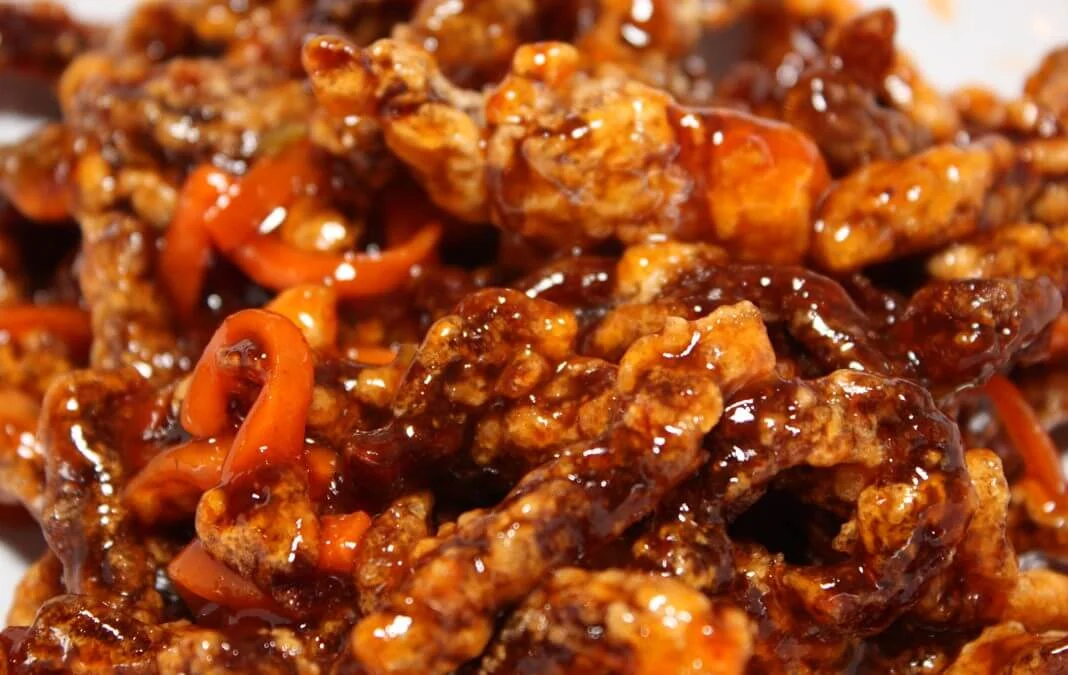Take Me to the Recipes
In the realm of culinary delights, Chinese Beef Recipes stand out as a testament to the rich tapestry of flavors woven into the intricate fabric of Chinese cuisine. Bursting with a harmonious blend of savory, sweet, and spicy notes, these recipes showcase the diversity of techniques and regional influences found across China.
In this compilation of gastronomic wonders, we present 24 Chinese Beef Recipes that not only tantalize the taste buds but also offer a captivating journey through the history, traditions, and distinct regional flavors of Chinese culinary artistry.
From the sizzling streets of Sichuan to the vibrant kitchens of Beijing, each recipe unveils a unique story, inviting you to embark on a flavorful exploration of the vast and varied world of Chinese beef dishes. So, fasten your apron and prepare to immerse yourself in a culinary adventure that celebrates the art of Chinese Beef Recipes.
Savor iconic Chinese Beef Recipes – Click on each tantalizing picture to open up the Recipe.
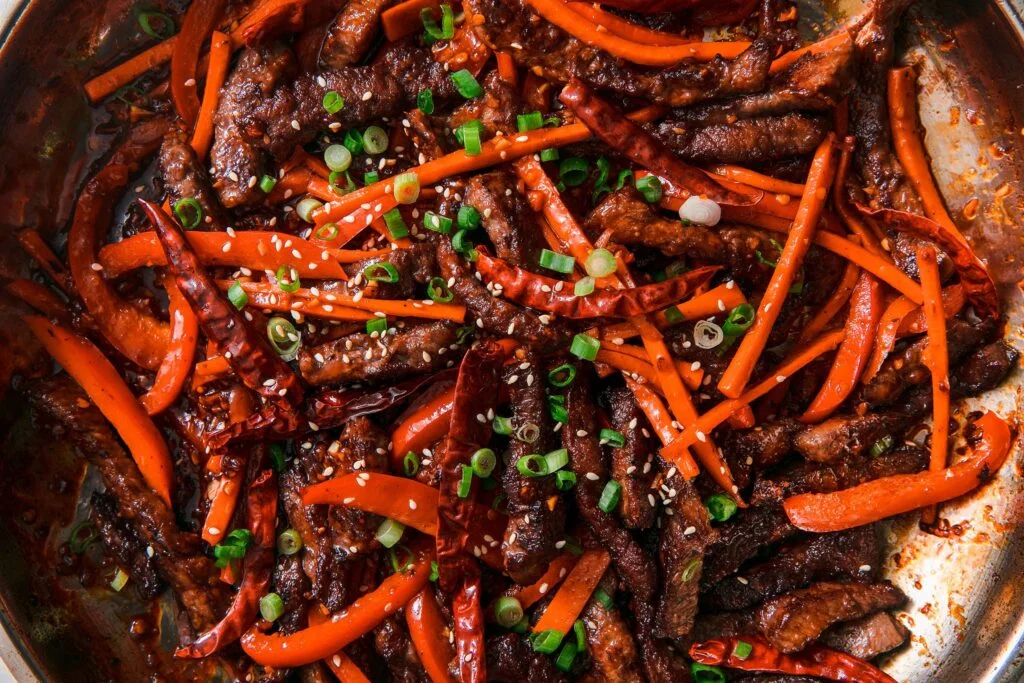
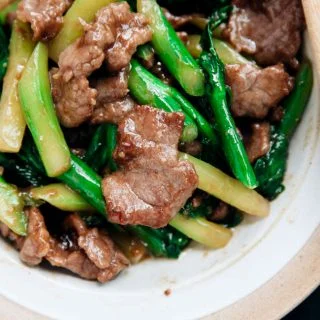
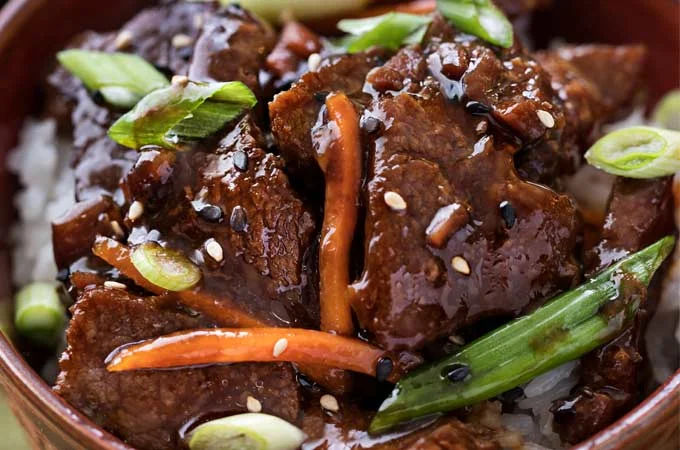

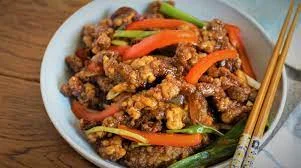
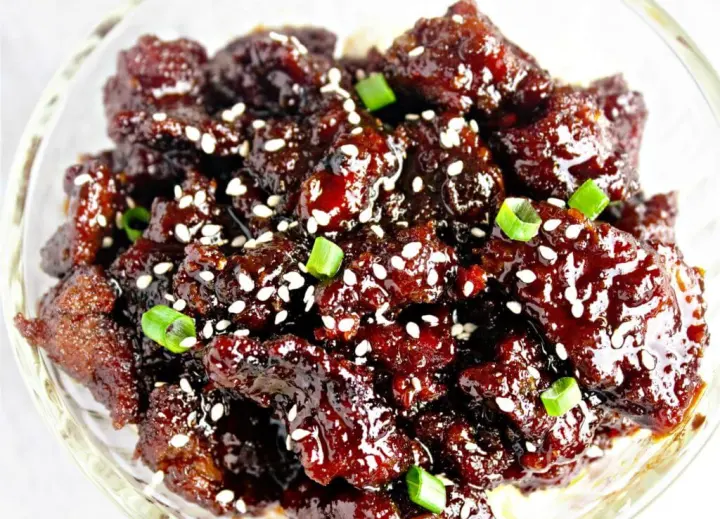
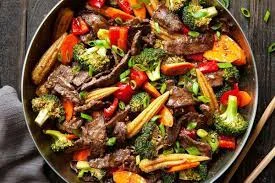
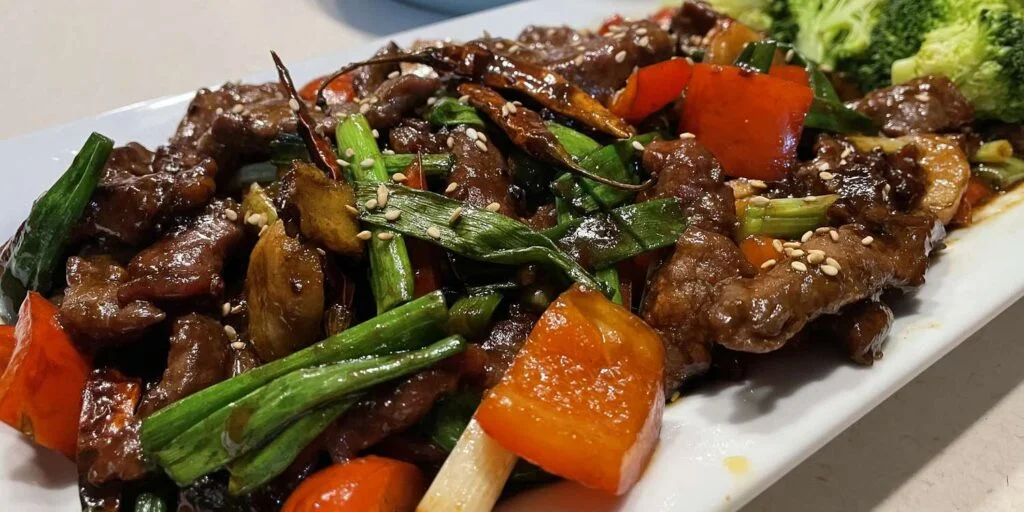
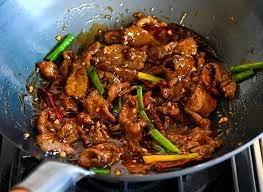
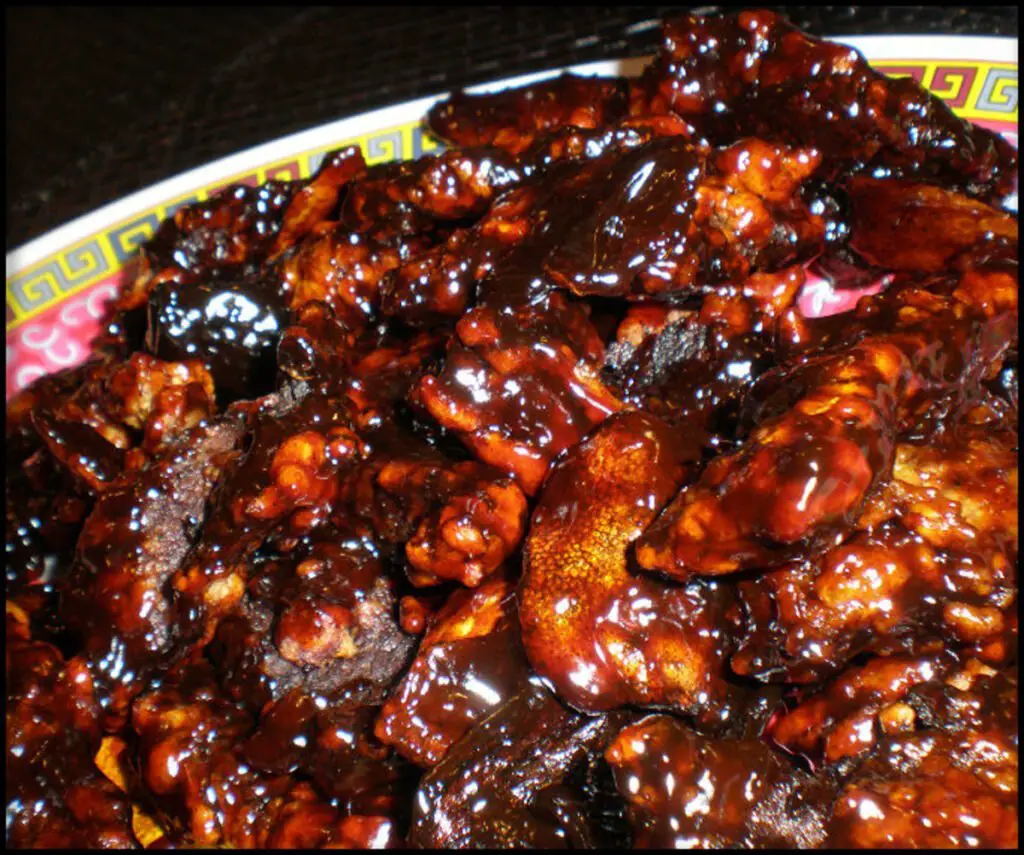
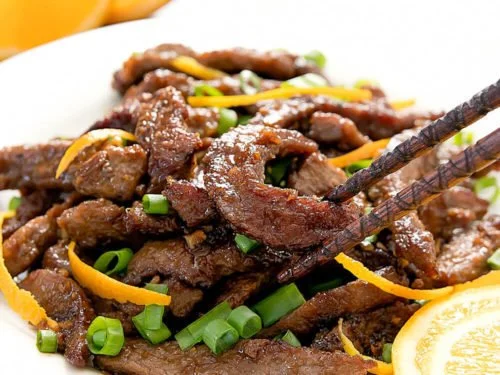

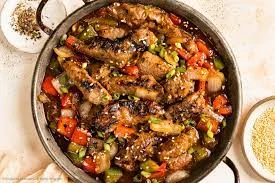
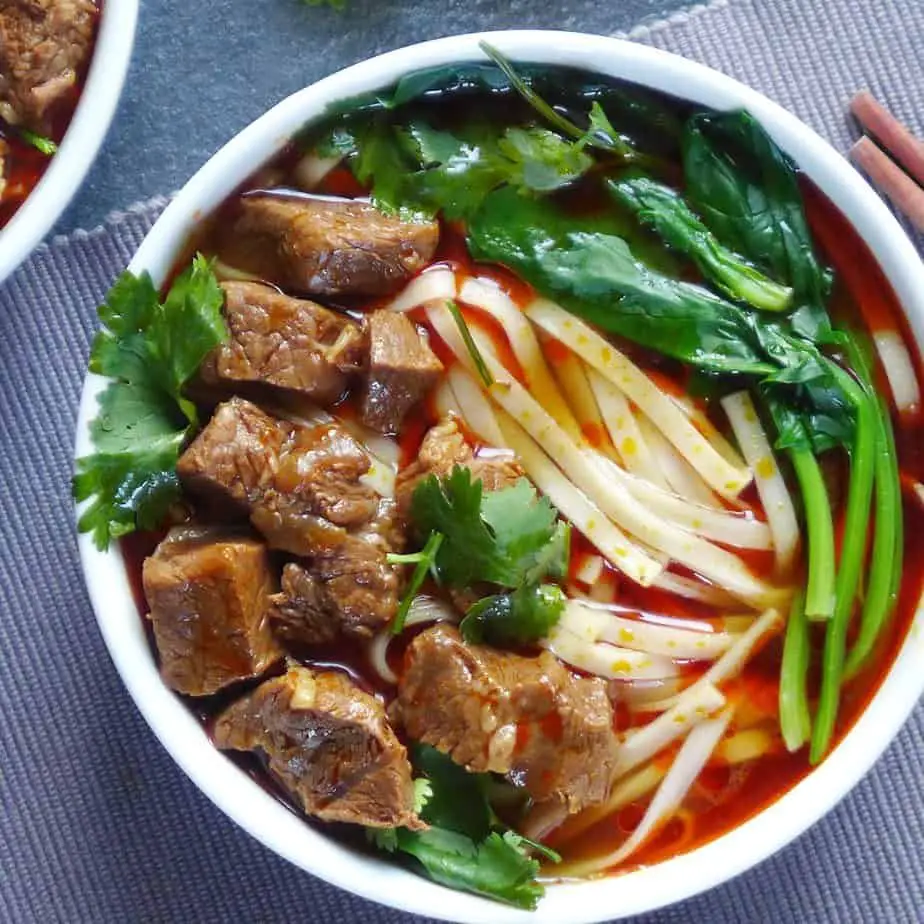
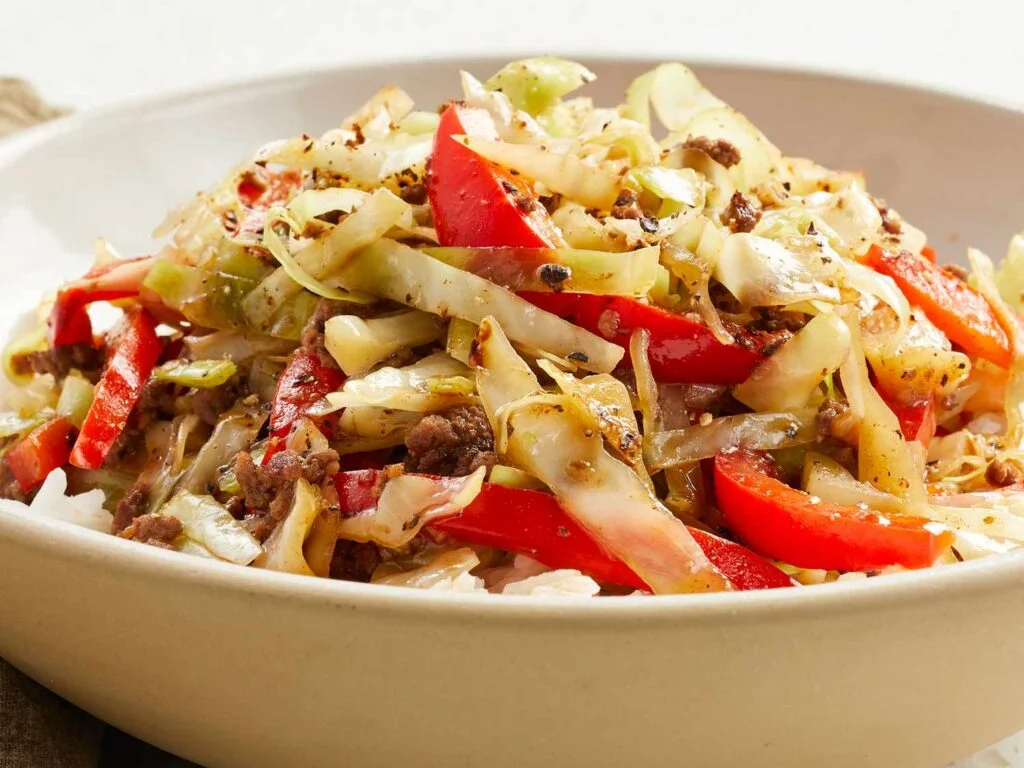
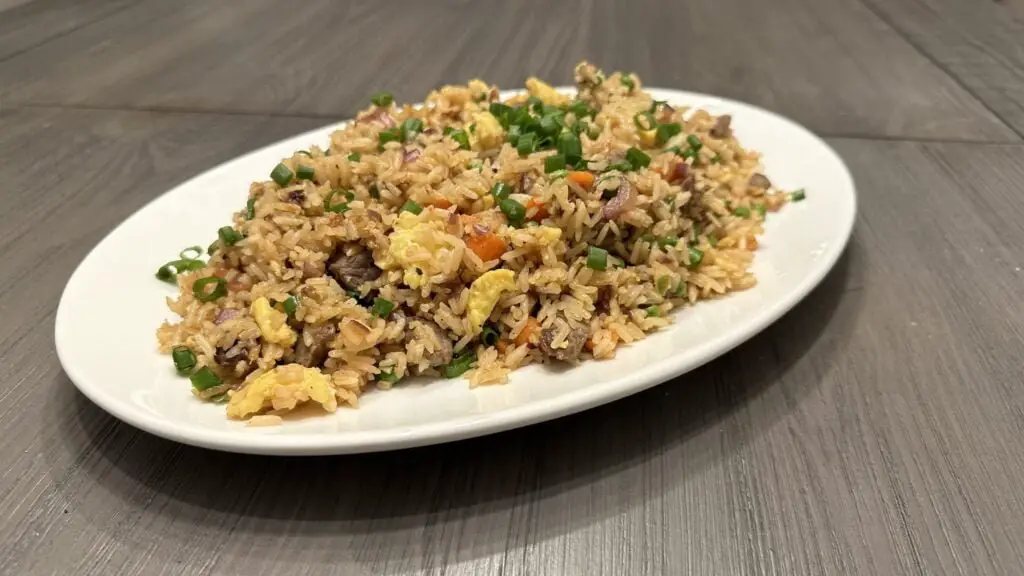
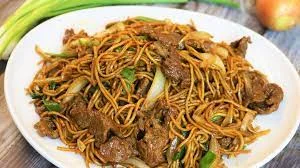
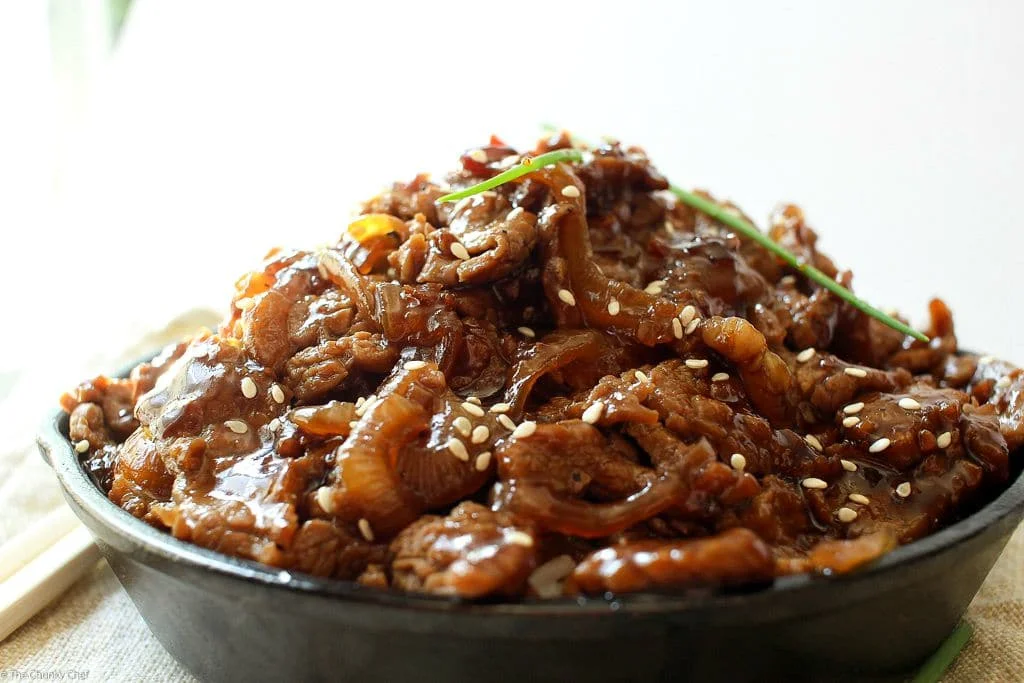
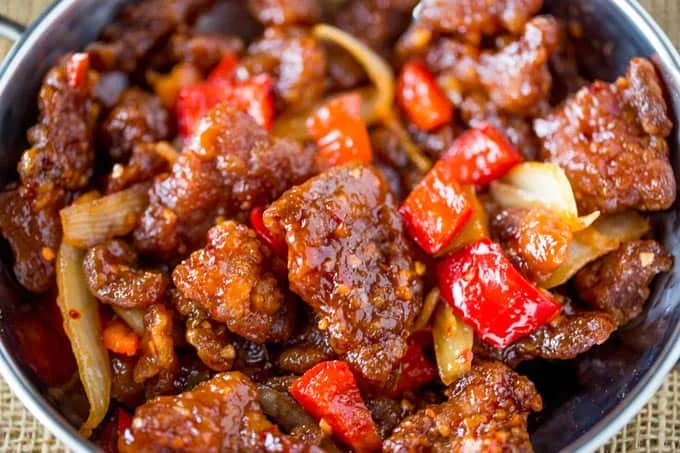
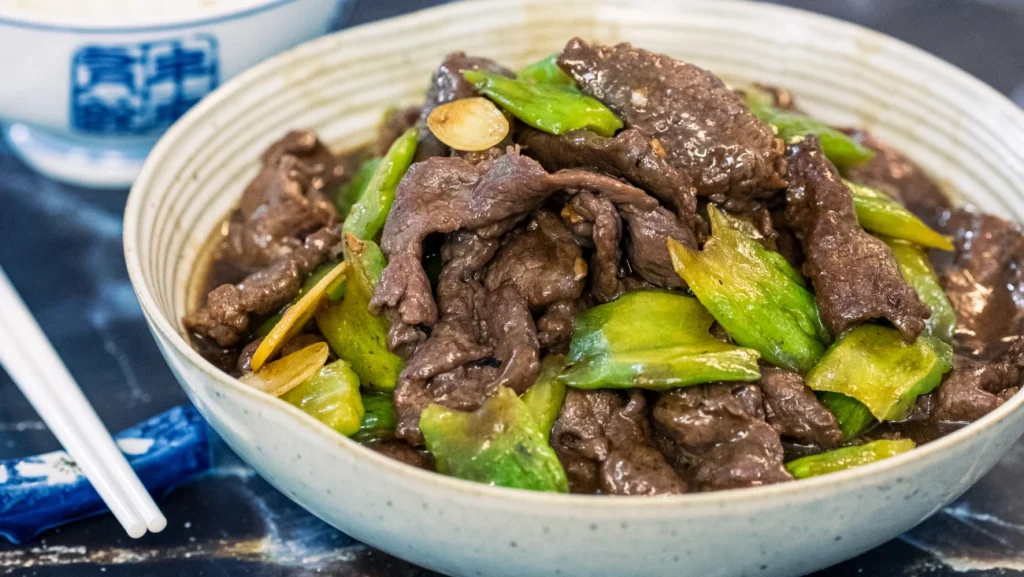
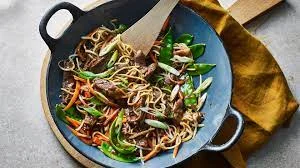
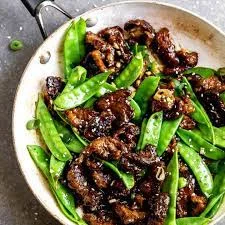
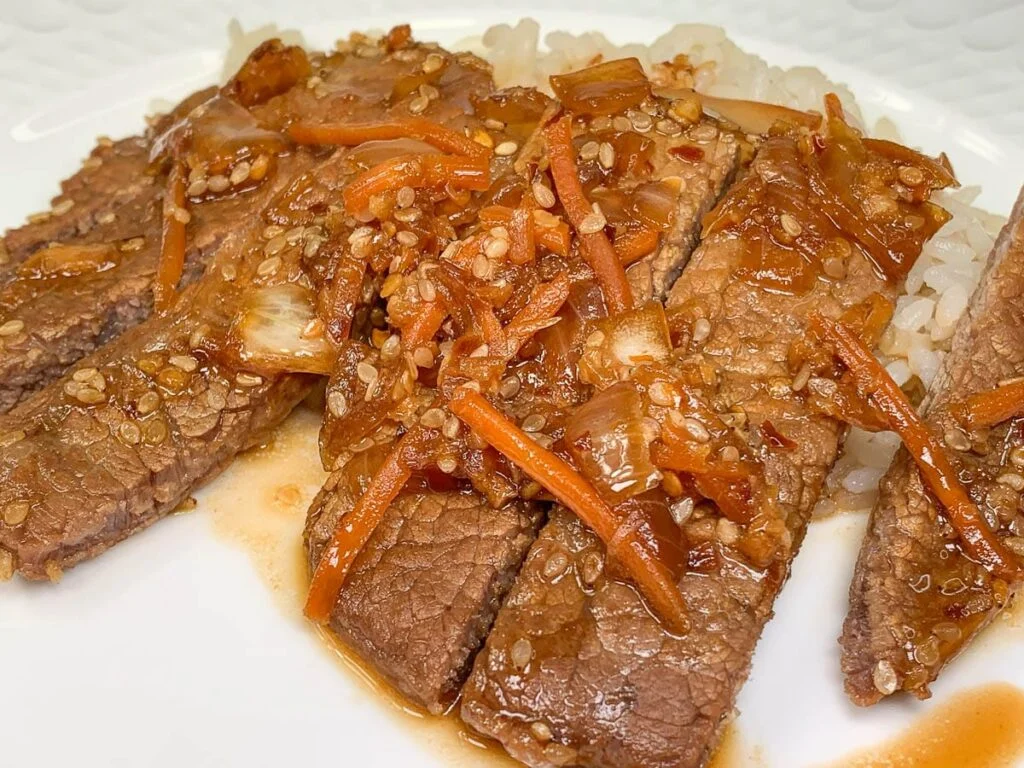
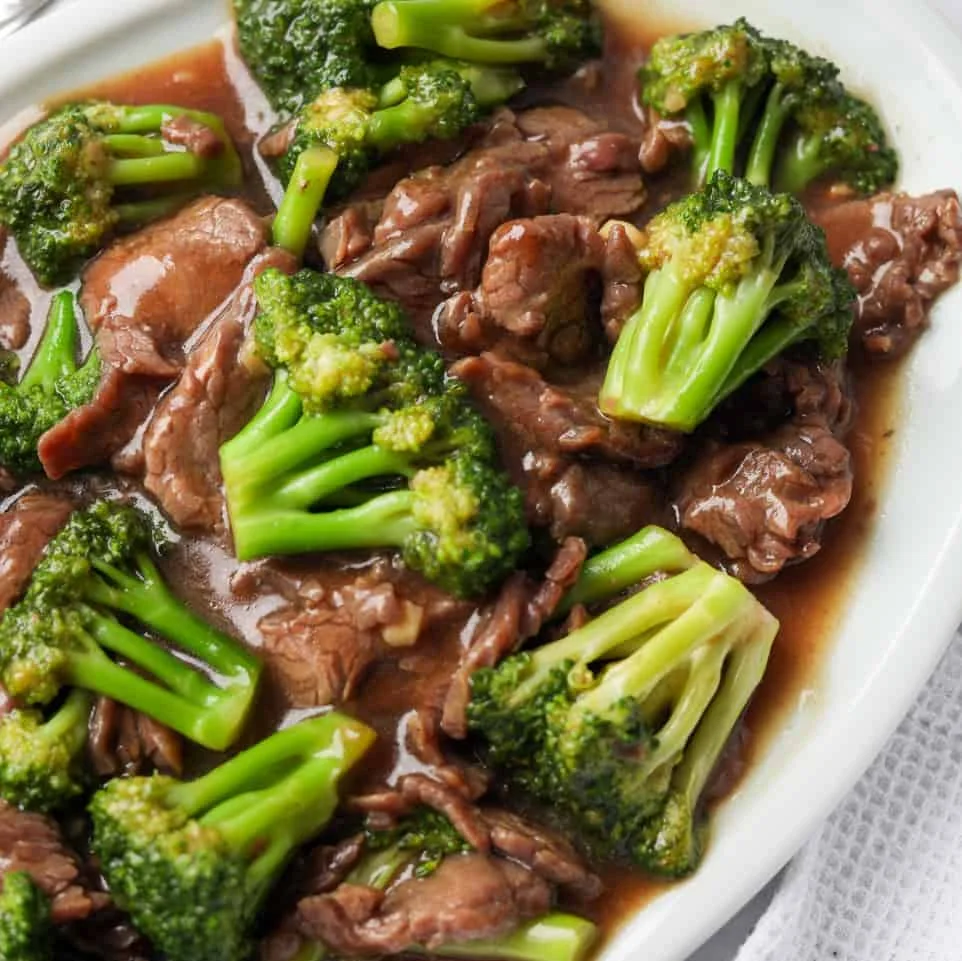
More Articles for Your Pleasure
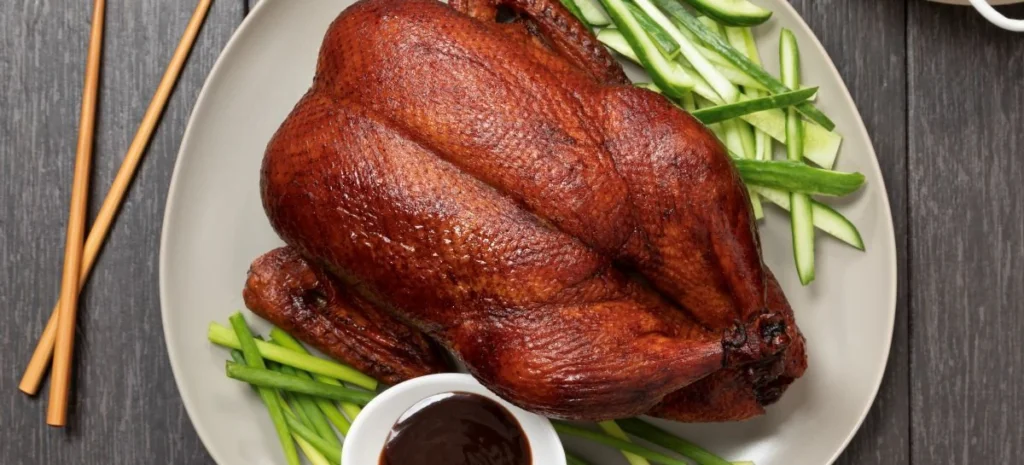

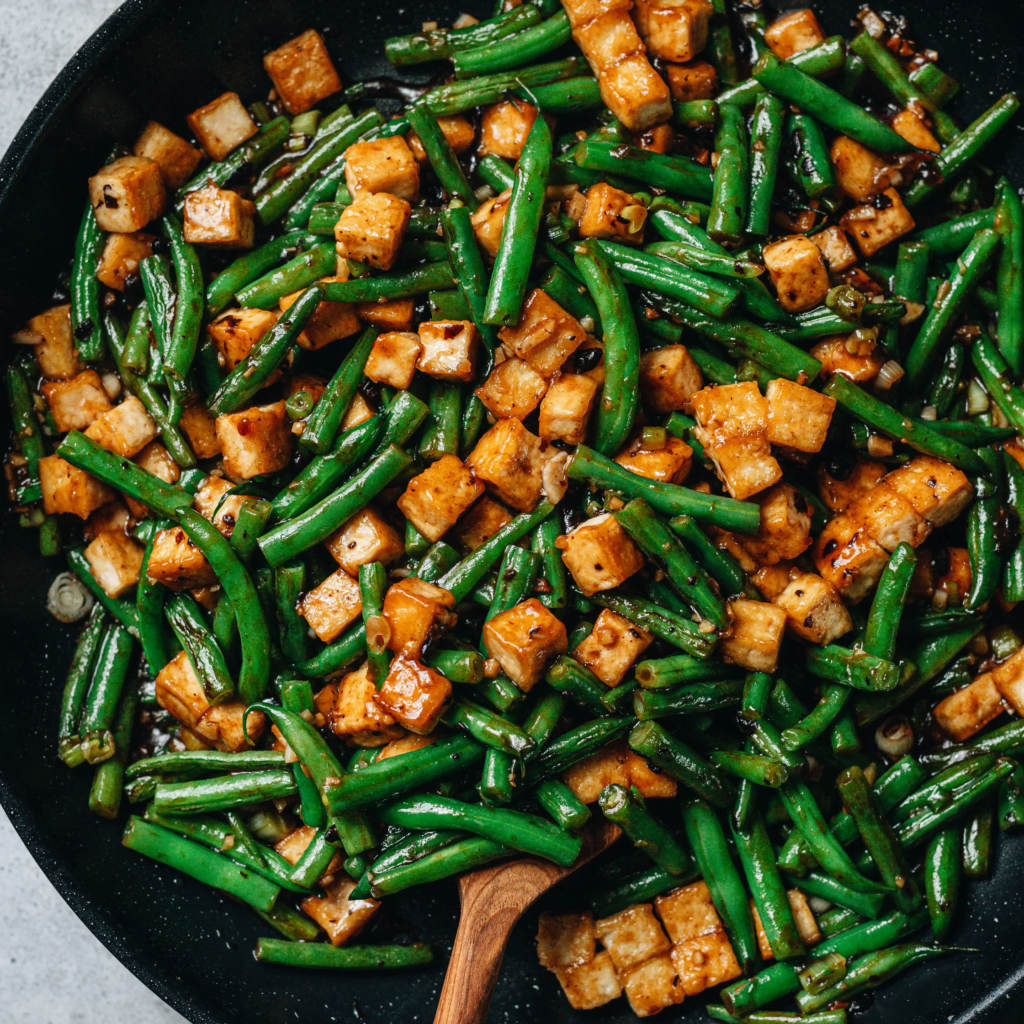


- Chinese Food – A delightful exploration
- 39 Amazing Chinese Pork Recipes
- 48 Mouthwatering Chinese Vegan Food Recipes
- 41 Irresistible Sweet Chinese Desserts
- North and South American Cuisine – A Culinary Expedition
- European Cuisine: Savor the Continent’s Best Culinary Secrets!
- African Cuisine: Discover the Bold Flavors & Global Charm!
- Asian Cuisine Unlock its Secrets – Taste, Health & Global Influence!
- Oceania Cooking: A Culinary Journey Through the Pacific
Chinese Beef Recipes – Asian Beef with Snow Peas

History and Background
Chinese cuisine is rich and diverse, with a culinary history that spans thousands of years. The recipes passed down through generations often reflect regional flavors and cooking techniques. The dish “Asian Beef with Snow Peas” showcases the balance of flavors and textures that Chinese cuisine is known for.
Originating from the stir-fry tradition, this dish highlights the use of fresh, crisp snow peas and tender beef, creating a harmonious blend of savory and slightly sweet flavors.
Region of Origin
The stir-fry technique, central to this recipe, is a hallmark of Cantonese cuisine. Cantonese cuisine hails from the Guangdong province in Southern China, known for its emphasis on fresh ingredients and quick cooking methods. “Asian Beef with Snow Peas” encapsulates the essence of Cantonese cuisine, with its vibrant colors, bold flavors, and a delightful interplay of textures.
Chinese Beef Recipes – Asian Beef with Snow Peas Ingredients
- 1 lb beef sirloin, thinly sliced
- 1 cup snow peas, ends trimmed
- 1 red bell pepper, thinly sliced
- 1 yellow bell pepper, thinly sliced
- 3 cloves garlic, minced
- 1 tablespoon ginger, grated
- 2 tablespoons soy sauce
- 1 tablespoon oyster sauce
- 1 tablespoon hoisin sauce
- 1 tablespoon Shaoxing wine (or dry sherry)
- 1 teaspoon cornstarch
- 2 tablespoons vegetable oil
- Salt and pepper to taste
- Sesame seeds for garnish (optional)
- Green onions, sliced, for garnish (optional)
Chinese Beef Recipes – Asian Beef with Snow Peas Recipe
Preparation
- In a bowl, combine the sliced beef with soy sauce, Shaoxing wine, and cornstarch. Allow it to marinate for at least 15 minutes.
- In a small bowl, mix together the oyster sauce and hoisin sauce. Set aside.
Cooking Steps
- Heat the vegetable oil in a wok or large skillet over medium-high heat.
- Add the marinated beef to the hot oil and stir-fry until browned. Remove the beef from the wok and set aside.
- In the same wok, add a bit more oil if needed. Stir-fry the garlic and ginger until fragrant.
- Add the snow peas, red bell pepper, and yellow bell pepper to the wok. Stir-fry until the vegetables are crisp-tender.
- Return the cooked beef to the wok and pour the sauce mixture over the ingredients. Toss everything together until well-coated and heated through.
- Adjust the seasoning with salt and pepper to taste.
- Garnish with sesame seeds and sliced green onions if desired.
- Serve the Asian Beef with Snow Peas over steamed rice and enjoy this delicious taste of Cantonese cuisine.
Feel free to customize the recipe to suit your preferences, and savor the delightful flavors of this classic Chinese dish!
Chinese Beef Recipes – Asian Fire Meat

History and Background
“Asian Fire Meat” is a dynamic Chinese beef dish that reflects the bold and spicy flavors often associated with Szechuan cuisine. Originating from the Sichuan province in southwestern China, Szechuan cuisine is renowned for its use of fiery spices and unique flavor combinations.
The name “Fire Meat” aptly describes the dish’s intense heat and the characteristic numbing sensation imparted by Szechuan peppercorns. This culinary tradition dates back centuries, with Szechuan cuisine being celebrated for its boldness and complexity.
Region of Origin
Szechuan cuisine is deeply rooted in the Sichuan province, a region with a rich agricultural landscape and a history of diverse culinary influences. Known for its liberal use of garlic, ginger, and chili peppers, Szechuan cuisine creates a memorable culinary experience that is both spicy and flavorful.
“Asian Fire Meat” embodies the spirit of Szechuan cuisine, offering a tantalizing journey for those who savor intense and vibrant tastes.
Chinese Beef Recipes – Asian Fire Meat Ingredients
- 1 lb flank steak, thinly sliced
- 2 tablespoons vegetable oil
- 2 tablespoons soy sauce
- 1 tablespoon Shaoxing wine (or dry sherry)
- 1 tablespoon sugar
- 1 tablespoon cornstarch
- 1 teaspoon sesame oil
- 1 teaspoon Szechuan peppercorns, toasted and ground
- 2 teaspoons chili flakes (adjust to taste)
- 3 cloves garlic, minced
- 1 tablespoon ginger, grated
- 4 green onions, sliced (white and green parts separated)
- 1 red bell pepper, thinly sliced
- 1 green bell pepper, thinly sliced
- 1 tablespoon hoisin sauce
- 1 tablespoon rice vinegar
Chinese Beef Recipes – Asian Fire Meat Recipe
Preparation
- In a bowl, combine the sliced flank steak with soy sauce, Shaoxing wine, sugar, cornstarch, and sesame oil. Allow it to marinate for at least 15 minutes.
- Toast the Szechuan peppercorns in a dry pan over medium heat until fragrant. Grind them into a coarse powder.
Cooking Steps
- Heat vegetable oil in a wok or large skillet over high heat.
- Add the marinated beef to the hot oil and stir-fry until browned. Remove the beef from the wok and set aside.
- In the same wok, add more oil if needed. Stir-fry garlic, ginger, and the white parts of the green onions until aromatic.
- Add the sliced bell peppers to the wok and stir-fry until they begin to soften.
- Return the cooked beef to the wok. Add hoisin sauce, rice vinegar, ground Szechuan peppercorns, and chili flakes. Toss everything together until well-coated and heated through.
- Garnish with the remaining green onions.
- Adjust the seasoning to taste.
- Serve the Asian Fire Meat over steamed rice and experience the bold and spicy flavors of Szechuan cuisine.
Feel free to adjust the level of spiciness to suit your preference and enjoy the fiery goodness of this Szechuan-inspired dish!
Chinese Beef Recipes – Beef and Broccoli

History and Background
“Beef and Broccoli” is a classic Chinese-American dish that has become a staple in many Chinese restaurants. While it has its roots in American-Chinese cuisine, the dish draws inspiration from traditional Chinese stir-frying techniques. Broccoli, not traditionally a Chinese vegetable, pairs well with the savory beef and a flavorful brown sauce. This dish exemplifies the fusion of Chinese and American culinary influences, showcasing the adaptability and creativity of Chinese cuisine in different cultural contexts.
Region of Origin
While “Beef and Broccoli” doesn’t have a specific regional origin in China, it reflects the essence of Cantonese stir-fry, where quick cooking and vibrant, fresh ingredients are central. Cantonese cuisine, originating from the Guangdong province in Southern China, heavily influences Chinese-American cuisine. The dish’s popularity in the United States and beyond speaks to the global appeal of Cantonese flavors and cooking techniques.
Chinese Beef Recipes – Beef and Broccoli Ingredients
- 1 lb flank steak, thinly sliced
- 1 lb broccoli, cut into florets
- 3 tablespoons soy sauce
- 2 tablespoons oyster sauce
- 1 tablespoon hoisin sauce
- 1 tablespoon cornstarch
- 1 tablespoon sugar
- 1 tablespoon sesame oil
- 2 tablespoons vegetable oil (for cooking)
- 3 cloves garlic, minced
- 1 tablespoon ginger, grated
- 1/2 cup beef broth
- 1 teaspoon rice vinegar
- 1 teaspoon red pepper flakes (optional)
- Cooked white rice for serving
Chinese Beef Recipes – Beef and Broccoli Recipe
Preparation
- In a bowl, combine sliced flank steak with soy sauce, cornstarch, sugar, and sesame oil. Allow it to marinate for at least 15 minutes.
- In a separate bowl, mix together soy sauce, oyster sauce, hoisin sauce, and beef broth. Set aside.
Cooking Steps
- Heat vegetable oil in a wok or large skillet over high heat.
- Add the marinated beef to the hot oil and stir-fry until browned. Remove the beef from the wok and set aside.
- In the same wok, add more oil if needed. Stir-fry garlic and ginger until aromatic.
- Add broccoli florets to the wok and stir-fry until they begin to turn vibrant green.
- Return the cooked beef to the wok. Pour in the sauce mixture, rice vinegar, and red pepper flakes (if using). Toss everything together until well-coated and heated through.
- Adjust the seasoning to taste.
- Serve the Beef and Broccoli over steamed white rice, and enjoy this delicious and comforting Chinese-American dish.
Feel free to customize the recipe to your liking, and savor the delightful combination of tender beef and crisp broccoli in a savory sauce.
Chinese Beef Recipes – Beef Chow Mein

History and Background
“Beef Chow Mein” is a popular Chinese stir-fried noodle dish that has found its way into many international cuisines. The term “Chow Mein” itself is of Cantonese origin, translating to “stir-fried noodles.” While the exact origin of Beef Chow Mein is not well-documented, it has become a beloved dish in Chinese-American cuisine. The dish typically features a delightful combination of stir-fried beef, vegetables, and crispy noodles, showcasing the influence of Cantonese culinary techniques and flavors.
Region of Origin
Cantonese cuisine, originating from the Guangdong province in Southern China, is known for its emphasis on fresh ingredients, quick cooking methods, and balanced flavors. Beef Chow Mein embodies the spirit of Cantonese stir-frying, where various ingredients come together harmoniously to create a satisfying and flavorful dish. While the dish may have evolved in the United States, its roots are firmly planted in the traditions of Cantonese cuisine.
Chinese Beef Recipes – Beef Chow Mein Ingredients
- 1 lb flank steak, thinly sliced
- 8 oz chow mein noodles
- 2 tablespoons vegetable oil
- 2 cups bok choy, chopped
- 1 cup carrots, julienned
- 1 cup bean sprouts
- 1 cup mushrooms, sliced
- 3 cloves garlic, minced
- 1 tablespoon ginger, grated
- 1/4 cup soy sauce
- 2 tablespoons oyster sauce
- 1 tablespoon hoisin sauce
- 1 tablespoon cornstarch
- 1 teaspoon sugar
- 1/2 cup beef broth
- 2 green onions, sliced (for garnish)
- Sesame seeds (optional, for garnish)
Chinese Beef Recipes – Beef Chow Mein Recipe
Preparation
- Cook the chow mein noodles according to package instructions. Drain and set aside.
- In a bowl, combine sliced flank steak with soy sauce, oyster sauce, hoisin sauce, cornstarch, and sugar. Allow it to marinate for at least 15 minutes.
Cooking Steps
- Heat vegetable oil in a wok or large skillet over high heat.
- Add the marinated beef to the hot oil and stir-fry until browned. Remove the beef from the wok and set aside.
- In the same wok, add more oil if needed. Stir-fry garlic and ginger until aromatic.
- Add bok choy, carrots, bean sprouts, and mushrooms to the wok. Stir-fry until the vegetables are crisp-tender.
- Return the cooked beef to the wok. Pour in beef broth and add the cooked chow mein noodles. Toss everything together until well-coated and heated through.
- Adjust the seasoning with additional soy sauce or salt if needed.
- Garnish with sliced green onions and sesame seeds if desired.
- Serve the Beef Chow Mein hot and enjoy the delicious blend of flavors and textures.
Feel free to customize the recipe with your favorite vegetables and enjoy the savory goodness of this classic Chinese-American dish!
Chinese Beef Recipes – Beef fried rice

History and Background
“Beef Fried Rice” is a popular dish that showcases the versatility of Chinese cuisine. While fried rice itself has ancient roots in China, the incorporation of beef reflects the adaptation of traditional recipes to include meat. Fried rice has long been a practical and flavorful way to use leftover rice, transforming it into a satisfying meal. The dish’s history is intertwined with Chinese culinary traditions, where resourcefulness and creativity in the kitchen have given rise to numerous delicious and practical recipes.
Region of Origin
Fried rice is a staple in many Chinese regional cuisines, and its origins can be traced back to Southern China. Guangdong province, with its diverse culinary landscape, is often credited as the birthplace of fried rice. As the dish spread throughout China and beyond, variations emerged, incorporating local ingredients and flavors. “Beef Fried Rice” is a testament to the adaptability of fried rice, blending the flavors of tender beef, vegetables, and savory soy sauce.
Ingredients
- 2 cups cooked jasmine rice (preferably cold and day-old)
- 1 lb flank steak, thinly sliced
- 2 tablespoons vegetable oil
- 3 eggs, beaten
- 1 cup carrots, diced
- 1 cup peas (fresh or frozen)
- 3 green onions, chopped
- 3 cloves garlic, minced
- 2 tablespoons soy sauce
- 1 tablespoon oyster sauce
- 1 teaspoon sesame oil
- Salt and pepper to taste
Chinese Beef Recipes – Beef fried rice Recipe
Preparation
- Cook jasmine rice according to package instructions. Allow it to cool and refrigerate for at least a few hours or overnight.
- Slice the flank steak thinly against the grain.
Cooking Steps
- Heat vegetable oil in a wok or large skillet over medium-high heat.
- Add sliced beef to the hot oil and stir-fry until browned. Remove beef from the wok and set aside.
- In the same wok, pour the beaten eggs. Scramble the eggs until they are just cooked. Remove the scrambled eggs from the wok and set aside.
- Add a bit more oil to the wok if needed. Stir-fry garlic until aromatic.
- Add diced carrots to the wok and stir-fry until they start to soften.
- Add cold, day-old rice to the wok, breaking up any clumps. Stir-fry to heat the rice thoroughly.
- Return the cooked beef and scrambled eggs to the wok. Add peas and chopped green onions. Mix everything well.
- Pour soy sauce, oyster sauce, and sesame oil over the rice. Stir-fry until all ingredients are evenly coated and heated through.
- Season with salt and pepper to taste.
- Serve the Beef Fried Rice hot, and enjoy the delightful combination of flavors and textures.
Feel free to customize the recipe by adding your favorite vegetables or adjusting the seasoning according to your taste preferences.
Chinese Beef Recipes – Beef Lo Mein

History and Background
“Beef Lo Mein” is a savory and satisfying Chinese noodle dish that has become a favorite in many parts of the world. The dish is part of the broader family of lo mein dishes, where wheat noodles are stir-fried with a variety of ingredients. While the specific origins of Beef Lo Mein are not well-documented, it draws inspiration from traditional Chinese stir-frying techniques and the use of wheat-based noodles. This flavorful dish reflects the diverse influences within Chinese cuisine, offering a delicious combination of tender beef, fresh vegetables, and a savory sauce.
Region of Origin
The origins of Beef Lo Mein can be traced back to Cantonese cuisine, with its emphasis on fresh ingredients and skillful stir-frying. Cantonese cuisine, originating from the Guangdong province in Southern China, is known for its diverse flavors and techniques. The dish has evolved over time and has become a popular and versatile option in both traditional Chinese kitchens and international Chinese-American cuisine.
Chinese Beef Recipes – Beef Lo Mein Ingredients
- 8 oz lo mein noodles
- 1 lb flank steak, thinly sliced
- 2 tablespoons soy sauce
- 1 tablespoon oyster sauce
- 1 tablespoon hoisin sauce
- 1 tablespoon Shaoxing wine (or dry sherry)
- 1 tablespoon cornstarch
- 2 tablespoons vegetable oil
- 3 cloves garlic, minced
- 1 tablespoon ginger, grated
- 1 cup broccoli florets
- 1 carrot, julienned
- 1 bell pepper, thinly sliced
- 1 cup snap peas, trimmed
- 3 green onions, sliced
- 1 teaspoon sesame oil
- Salt and pepper to taste
Chinese Beef Recipes – Beef Lo Mein Recipe
Preparation
- Cook the lo mein noodles according to package instructions. Drain and set aside.
- In a bowl, combine sliced flank steak with soy sauce, oyster sauce, hoisin sauce, Shaoxing wine, and cornstarch. Allow it to marinate for at least 15 minutes.
Cooking Steps
- Heat vegetable oil in a wok or large skillet over high heat.
- Add the marinated beef to the hot oil and stir-fry until browned. Remove the beef from the wok and set aside.
- In the same wok, add more oil if needed. Stir-fry garlic and ginger until aromatic.
- Add broccoli, carrot, bell pepper, and snap peas to the wok. Stir-fry until the vegetables are crisp-tender.
- Return the cooked beef to the wok. Add the cooked lo mein noodles and green onions. Toss everything together.
- Pour in sesame oil and toss again to coat evenly.
- Season with salt and pepper to taste.
- Serve the Beef Lo Mein hot, and enjoy the delightful combination of flavors and textures.
Feel free to customize the recipe by adding your favorite vegetables or adjusting the seasoning according to your taste preferences. Enjoy this delicious and comforting Beef Lo Mein!
Chinese Beef Recipes – Beef Stir Fry with Honey Pepper Sauce

History and Background
“Beef Stir Fry with Honey Pepper Sauce” is a delightful Chinese dish that marries the rich flavors of beef with the sweet and spicy notes of honey and pepper. While the specific origin of this dish is not well-documented, it reflects the essence of Chinese stir-frying techniques and the inventive use of ingredients to create a harmonious blend of flavors. This dish is a testament to the versatility of Chinese cuisine, where the balance of sweet and spicy elements is a hallmark of many traditional recipes.
Region of Origin
Chinese stir-fry dishes have roots in various regions, and the technique is widely practiced throughout the country. While this specific recipe may not have a distinct regional origin, it embodies the essence of Chinese culinary traditions. Stir-frying is a popular cooking method in Cantonese cuisine, known for its quick and high-heat cooking techniques. The dish’s inspiration likely draws from the diverse culinary landscape found across China.
Chinese Beef Recipes – Beef Stir Fry with Honey Pepper Sauce Ingredients
- 1 lb flank steak, thinly sliced
- 2 tablespoons soy sauce
- 2 tablespoons oyster sauce
- 2 tablespoons honey
- 1 tablespoon Shaoxing wine (or dry sherry)
- 1 tablespoon cornstarch
- 1 teaspoon sesame oil
- 2 tablespoons vegetable oil
- 3 cloves garlic, minced
- 1 tablespoon ginger, grated
- 1 bell pepper, thinly sliced
- 1 red onion, thinly sliced
- 1 tablespoon black peppercorns, crushed
- Green onions, sliced (for garnish)
- Sesame seeds (optional, for garnish)
Chinese Beef Recipes – Beef Stir Fry with Honey Pepper Sauce Recipe
Preparation
- Combine sliced flank steak with soy sauce, oyster sauce, honey, Shaoxing wine, cornstarch, and sesame oil. Allow it to marinate for at least 15 minutes.
- Crush black peppercorns.
Cooking Steps
- Heat vegetable oil in a wok or large skillet over high heat.
- Add marinated beef to the hot oil and stir-fry until browned. Remove beef from the wok and set aside.
- In the same wok, add more oil if needed. Stir-fry garlic and ginger until aromatic.
- Add sliced bell pepper and red onion to the wok. Stir-fry until the vegetables are crisp-tender.
- Return the cooked beef to the wok. Add crushed black peppercorns. Toss everything together until well-coated.
- Adjust the seasoning if needed.
- Garnish with sliced green onions and sesame seeds if desired.
- Serve the Beef Stir Fry with Honey Pepper Sauce over steamed rice and enjoy the perfect balance of sweet, savory, and spicy flavors.
Feel free to tailor the recipe to your preferences, experimenting with the level of spiciness and adjusting the ingredients to suit your taste.
Chinese Beef Recipes – Beijing Beef

History and Background
“Beijing Beef” is a Chinese-American dish that captures the essence of sweet and tangy flavors, with a touch of heat. While it does not have a direct historical connection to Beijing, the name suggests an association with the capital city of China. This dish likely evolved in Chinese-American restaurants, showcasing the fusion of traditional Chinese cooking techniques with Western tastes. Beijing Beef is known for its crispy texture, savory-sweet glaze, and the inclusion of various vegetables, creating a well-balanced and flavorful culinary experience.
Region of Origin
Beijing, the capital city of China, is renowned for its rich history and diverse culinary traditions. While Beijing Beef may not have originated in Beijing itself, it reflects the adaptability and innovation seen in Chinese-American cuisine. The dish’s popularity demonstrates the global influence of Chinese flavors, with a unique twist that caters to Western palates.
Chinese Beef Recipes – Beijing Beef Ingredients
- 1 lb flank steak, thinly sliced
- 1/2 cup cornstarch
- Vegetable oil (for deep-frying)
- 1/2 cup bell peppers, thinly sliced
- 1/2 cup onion, thinly sliced
- 1/4 cup green onions, chopped (for garnish)
- Sesame seeds (for garnish)
Sauce:
- 1/4 cup soy sauce
- 2 tablespoons hoisin sauce
- 2 tablespoons ketchup
- 2 tablespoons sweet chili sauce
- 2 tablespoons sugar
- 1 tablespoon rice vinegar
- 1 teaspoon sesame oil
- 1 teaspoon garlic, minced
- 1 teaspoon ginger, grated
Batter:
- 1/2 cup all-purpose flour
- 1/2 cup cornstarch
- 1 teaspoon baking powder
- 1/2 cup water
- 1/2 teaspoon salt
- 1/4 teaspoon black pepper
Chinese Beef Recipes – Beijing Beef Recipe
Preparation
- Combine sliced flank steak with cornstarch, ensuring the beef is well-coated.
- In a separate bowl, whisk together the batter ingredients until smooth.
- Heat vegetable oil in a deep fryer or large pot to 350°F (175°C).
Cooking Steps
- Dip the cornstarch-coated beef into the batter, allowing excess batter to drip off.
- Deep-fry the battered beef in batches until golden brown and crispy. Drain on paper towels.
- In a wok or skillet, heat a small amount of oil. Add sliced bell peppers and onions, and stir-fry until crisp-tender.
- In a bowl, whisk together the sauce ingredients until well-combined.
- Pour the sauce into the wok with the vegetables. Heat until the sauce thickens.
- Add the crispy beef to the wok, tossing to coat the beef evenly with the sauce.
- Garnish with chopped green onions and sesame seeds.
- Serve the Beijing Beef over steamed rice and enjoy the delightful combination of textures and flavors.
Feel free to adjust the level of sweetness or spice in the sauce to suit your taste preferences. Beijing Beef offers a tasty blend of crispy beef and a savory-sweet glaze, making it a popular choice in Chinese-American cuisine.
Chinese Beef Recipes – Bitter Melon and Black Bean Sauce Beef

History and Background
“Bitter Melon and Black Bean Sauce Beef” is a flavorful and distinctive Chinese dish that marries the unique bitterness of bitter melon with the savory complexity of fermented black bean sauce. While the specific origin of this dish is not extensively documented, it showcases the culinary creativity of Chinese cuisine. Bitter melon, known for its purported health benefits, is expertly paired with the rich umami flavors of black bean sauce, creating a harmonious and robust taste experience. This dish likely draws inspiration from Cantonese culinary traditions, given the prominence of these ingredients in the region’s cuisine.
Region of Origin
The dish likely finds its roots in Cantonese cuisine, which originates from the Guangdong province in Southern China. Cantonese cuisine is renowned for its diverse range of flavors and the use of fresh, high-quality ingredients. Bitter melon, with its slightly bitter taste, is a distinctive ingredient often featured in Cantonese dishes. The incorporation of fermented black bean sauce further enhances the depth of flavor, contributing to the dish’s unique appeal.
Chinese Beef Recipes – Bitter Melon and Black Bean Sauce Beef Ingredients
- 1 lb flank steak, thinly sliced
- 1 bitter melon, seeds removed and thinly sliced
- 2 tablespoons fermented black bean sauce
- 2 tablespoons oyster sauce
- 1 tablespoon soy sauce
- 1 tablespoon Shaoxing wine (or dry sherry)
- 1 tablespoon cornstarch
- 2 tablespoons vegetable oil
- 3 cloves garlic, minced
- 1 tablespoon ginger, grated
- 1 red chili, sliced (optional, for spice)
- 2 green onions, sliced (for garnish)
- Sesame seeds (optional, for garnish)
Chinese Beef Recipes – Bitter Melon and Black Bean Sauce Beef Recipe
Preparation
- Combine sliced flank steak with soy sauce, oyster sauce, Shaoxing wine, and cornstarch. Allow it to marinate for at least 15 minutes.
- Thinly slice the bitter melon, removing the seeds.
Cooking Steps
- Heat vegetable oil in a wok or large skillet over high heat.
- Add the marinated beef to the hot oil and stir-fry until browned. Remove the beef from the wok and set aside.
- In the same wok, add more oil if needed. Stir-fry garlic and ginger until aromatic.
- Add the sliced bitter melon to the wok. Stir-fry until the bitter melon is slightly tender.
- Return the cooked beef to the wok. Add fermented black bean sauce and stir-fry until everything is well-coated.
- If desired, add sliced red chili for a spicy kick.
- Garnish with sliced green onions and sesame seeds if desired.
- Serve the Bitter Melon and Black Bean Sauce Beef over steamed rice, savoring the unique combination of bitter, savory, and umami flavors.
Feel free to adjust the level of bitterness or spice to suit your taste preferences. This dish offers a distinctive taste that showcases the diversity of Cantonese cuisine.
Chinese Beef Recipes – Black Pepper Beef and Cabbage Stir Fry

History and Background
“Black Pepper Beef and Cabbage Stir Fry” is a flavorful Chinese dish that combines the robust taste of black pepper with the crisp texture of cabbage and tender beef. While the specific origin of this dish is not explicitly documented, it reflects the culinary creativity and diverse flavors found in Chinese cuisine. Stir-frying, a cooking method that originated in China, is a central technique in this dish, allowing the ingredients to retain their individual textures and flavors. The use of black pepper in Chinese cooking showcases the adaptability of traditional recipes to incorporate bold and aromatic spices.
Region of Origin
The dish likely draws inspiration from various Chinese culinary traditions, given the widespread use of stir-frying and black pepper in different regions. Stir-frying is a technique commonly associated with Cantonese and Szechuan cuisines, both known for their unique flavor profiles. The incorporation of black pepper hints at the influence of Szechuan cuisine, which is renowned for its bold and spicy dishes.
Black Pepper Beef and Cabbage Stir Fry Ingredients
- 1 lb flank steak, thinly sliced
- 1/2 head cabbage, thinly sliced
- 2 tablespoons soy sauce
- 1 tablespoon oyster sauce
- 1 tablespoon dark soy sauce
- 1 tablespoon Shaoxing wine (or dry sherry)
- 1 tablespoon cornstarch
- 1 tablespoon black peppercorns, crushed
- 2 tablespoons vegetable oil
- 3 cloves garlic, minced
- 1 tablespoon ginger, grated
- 2 green onions, sliced (for garnish)
- Sesame seeds (optional, for garnish)
Black Pepper Beef and Cabbage Stir Fry Recipe
Preparation
- Combine sliced flank steak with soy sauce, oyster sauce, dark soy sauce, Shaoxing wine, cornstarch, and crushed black peppercorns. Allow it to marinate for at least 15 minutes.
- Thinly slice the cabbage.
Cooking Steps
- Heat vegetable oil in a wok or large skillet over high heat.
- Add the marinated beef to the hot oil and stir-fry until browned. Remove the beef from the wok and set aside.
- In the same wok, add more oil if needed. Stir-fry garlic and ginger until aromatic.
- Add sliced cabbage to the wok. Stir-fry until the cabbage is crisp-tender.
- Return the cooked beef to the wok. Toss everything together until well-coated.
- Adjust the seasoning with additional soy sauce or salt if needed.
- Garnish with sliced green onions and sesame seeds if desired.
- Serve the Black Pepper Beef and Cabbage Stir Fry over steamed rice, enjoying the bold flavors and contrasting textures.
Feel free to customize the level of black pepper to suit your taste preferences, and savor the delightful combination of peppery goodness, tender beef, and crunchy cabbage in this Chinese stir-fry.
Chinese Beef Recipes – Chinese Beef Noodle Soup

History and Background
“Chinese Beef Noodle Soup” is a classic and comforting dish that holds a special place in Chinese culinary traditions. Originating from the northwestern regions of China, particularly in cities like Lanzhou, this noodle soup has a rich history that spans generations. Lanzhou Beef Noodle Soup, a famous regional variation, is renowned for its clear and aromatic broth, hand-pulled noodles, and tender beef slices. The dish’s popularity has spread throughout China and beyond, becoming a beloved comfort food enjoyed in various forms across different regions.
Region of Origin
The dish has strong ties to Lanzhou, the capital of Gansu province in northwestern China. Lanzhou Beef Noodle Soup is a celebrated street food, with specialized shops dedicated to perfecting the art of noodle-making and broth preparation. The noodles, often hand-pulled by skilled artisans, are a key element that sets this dish apart. The clear and flavorful broth, coupled with the use of simple yet quality ingredients, reflects the culinary ethos of northwestern Chinese cuisine.
Chinese Beef Noodle Soup Ingredients
- 1 lb beef shank or brisket, thinly sliced
- 8 oz Chinese wheat noodles (fresh or dried)
- 1 large onion, sliced
- 3 green onions, chopped
- 3 slices ginger
- 2 cloves garlic, minced
- 1 star anise
- 1 cinnamon stick
- 2 bay leaves
- 1 tablespoon soy sauce
- 1 tablespoon dark soy sauce
- 1 tablespoon Shaoxing wine (or dry sherry)
- Salt and white pepper to taste
- Vegetable oil for cooking
- Fresh cilantro (for garnish)
Chinese Beef Noodle Soup Recipe
Broth Preparation
- In a pot, heat vegetable oil and sauté ginger, garlic, and onions until aromatic.
- Add sliced beef and brown it on all sides.
- Pour in enough water to cover the beef, and add star anise, cinnamon stick, and bay leaves.
- Bring the broth to a boil, then reduce heat and simmer for at least 1 hour, skimming off any impurities.
Noodles and Assembly
- Cook Chinese wheat noodles according to package instructions. Drain and set aside.
- In a separate pot, bring water to a boil and blanch the cooked noodles briefly. Drain.
- In serving bowls, place a portion of the blanched noodles.
- Top with sliced beef and ladle the hot broth over the noodles and beef.
- Season with soy sauce, dark soy sauce, Shaoxing wine, salt, and white pepper to taste.
- Garnish with chopped green onions and fresh cilantro.
- Serve the Chinese Beef Noodle Soup hot and enjoy the rich flavors of the broth and tender beef.
Feel free to customize the toppings and adjust the seasoning to your liking. The Soup is a hearty and satisfying dish that captures the essence of traditional northwestern Chinese cuisine.
Chinese Beef Recipes – Chinese Pepper Steak

History and Background
The dish” is a savory and flavorful dish that exemplifies the art of stir-frying in Chinese cuisine. Originating from Chinese-American culinary traditions, this dish combines tender beef, vibrant bell peppers, and a savory black pepper sauce.
While its specific historical roots may not be well-documented, Chinese Pepper Steak reflects the influence of traditional Chinese stir-frying techniques adapted to suit Western tastes. This popular and beloved dish showcases the versatility of Chinese-American cuisine and the harmonious marriage of textures and flavors.
Region of Origin
Chinese Pepper Steak is a product of the Chinese-American culinary landscape, where chefs creatively blend traditional Chinese ingredients with Western influences. While it may not have a specific regional origin in China, it draws inspiration from the principles of Chinese stir-frying, with a focus on fresh ingredients and bold flavors. The dish’s popularity extends beyond Chinese-American restaurants, making it a staple in many households seeking the comforting and satisfying flavors of Chinese cuisine.
Chinese Pepper Steak Ingredients
- 1 lb flank steak, thinly sliced
- 1 green bell pepper, thinly sliced
- 1 red bell pepper, thinly sliced
- 1 onion, thinly sliced
- 2 tablespoons soy sauce
- 1 tablespoon oyster sauce
- 1 tablespoon cornstarch
- 1 teaspoon sugar
- 1 teaspoon black pepper
- 1/2 cup beef broth
- 2 tablespoons vegetable oil
- 3 cloves garlic, minced
- 1 tablespoon ginger, grated
- 2 green onions, sliced (for garnish)
- Sesame seeds (optional, for garnish)
Chinese Pepper Steak Recipe
Preparation
- Combine sliced flank steak with soy sauce, oyster sauce, cornstarch, sugar, and black pepper. Allow it to marinate for at least 15 minutes.
- Thinly slice the bell peppers and onion.
Cooking Steps
- Heat vegetable oil in a wok or large skillet over high heat.
- Add the marinated beef to the hot oil and stir-fry until browned. Remove the beef from the wok and set aside.
- In the same wok, add more oil if needed. Stir-fry garlic and ginger until aromatic.
- Add sliced bell peppers and onion to the wok. Stir-fry until the vegetables are crisp-tender.
- Return the cooked beef to the wok. Pour in beef broth and toss everything together until well-coated.
- Adjust the seasoning with additional soy sauce or black pepper if needed.
- Garnish with sliced green onions and sesame seeds if desired.
- Serve the Chinese Pepper Steak hot over steamed rice and enjoy the delicious blend of savory flavors and crunchy textures.
Feel free to customize the recipe by adding other vegetables or adjusting the level of black pepper to suit your taste preferences. Chinese Pepper Steak is a quick and tasty stir-fry that captures the essence of Chinese-American cuisine.
Chinese Beef Recipes – Crispy Ginger Beef

History and Background
“Crispy Ginger Beef” is a delightful Chinese-Canadian dish with a sweet and savory flavor profile. While its precise origin is not well-documented, this dish has become a beloved staple in Chinese-Canadian cuisine. It likely originated in Chinese-Canadian restaurants, where culinary creativity meets local tastes. The dish features crispy, thinly battered beef coated in a flavorful ginger sauce, showcasing the fusion of Chinese culinary techniques with North American preferences.
Region of Origin
The roots of Crispy Ginger Beef can be traced to Chinese communities in Canada, particularly in cities like Calgary, where the dish gained popularity. Chinese-Canadian cuisine, which blends traditional Chinese flavors with Western influences, is known for its diverse range of dishes tailored to local tastes. The dish exemplifies this fusion, featuring a unique combination of crispy textures and aromatic ginger-infused sauce.
Crispy Ginger Beef Ingredients
- 1 lb flank steak, thinly sliced
- 1 cup cornstarch (for coating)
- Vegetable oil (for deep-frying)
- 3 tablespoons ginger, finely chopped
- 3 cloves garlic, minced
- 1/2 cup soy sauce
- 1/4 cup rice vinegar
- 1/4 cup honey
- 1 tablespoon cornstarch (for sauce)
- 2 green onions, sliced (for garnish)
- Sesame seeds (optional, for garnish)
Recipe
Preparation
- Coat thinly sliced flank steak in cornstarch, ensuring each piece is well-coated.
- Heat vegetable oil in a deep fryer or large pot to 350°F (175°C).
Cooking Steps
- Deep-fry the cornstarch-coated beef in batches until golden brown and crispy. Drain on paper towels.
- In a separate pan, sauté finely chopped ginger and minced garlic until aromatic.
- In a bowl, mix soy sauce, rice vinegar, honey, and cornstarch to create the sauce.
- Pour the sauce over the sautéed ginger and garlic, stirring constantly until it thickens.
- Add the crispy beef to the sauce, tossing to coat each piece evenly.
- Garnish with sliced green onions and sesame seeds if desired.
- Serve the Crispy Ginger Beef over steamed rice, savoring the perfect balance of crispy texture and sweet-savory flavors.
Feel free to adjust the sweetness or add a touch of spice to the sauce according to your taste preferences. Crispy Ginger Beef is a delicious and satisfying dish that reflects the culinary fusion found in Chinese-Canadian cuisine.
Chinese Beef Recipes – Crispy Orange Beef

History and Background
“Crispy Orange Beef” is a flavorful Chinese-American dish that combines the zesty notes of orange with the crispy texture of battered and fried beef. While the specific origins of this dish are not well-documented, it is a popular item on many Chinese-American restaurant menus. Crispy Orange Beef showcases the adaptation of traditional Chinese cooking techniques to incorporate bold and citrusy flavors, appealing to a diverse range of palates. The dish is celebrated for its harmonious blend of sweet, savory, and tangy elements.
Region of Origin
Crispy Orange Beef likely originated in Chinese-American restaurants, where chefs creatively experimented with flavors to cater to Western tastes. While it may not have a direct association with a specific region in China, the dish reflects the influence of Cantonese cuisine, known for its emphasis on fresh ingredients and expert stir-frying techniques. The incorporation of orange flavor adds a distinctive twist to the classic crispy beef dish, making it a favorite among those who enjoy the fusion of Chinese and American culinary elements.
Crispy Orange Beef Ingredients
- 1 lb flank steak, thinly sliced
- 1 cup cornstarch (for coating)
- Vegetable oil (for deep-frying)
- Zest of 1 orange
- Juice of 1 orange
- 3 tablespoons soy sauce
- 2 tablespoons rice vinegar
- 2 tablespoons honey
- 1 tablespoon cornstarch (for sauce)
- 2 cloves garlic, minced
- 1 teaspoon ginger, grated
- Red pepper flakes (optional, for spice)
- 2 green onions, sliced (for garnish)
- Sesame seeds (optional, for garnish)
Chinese Beef Recipes – Crispy Orange Beef Recipe
Preparation
- Coat thinly sliced flank steak in cornstarch, ensuring each piece is well-coated.
- Heat vegetable oil in a deep fryer or large pot to 350°F (175°C).
Cooking Steps
- Deep-fry the cornstarch-coated beef in batches until golden brown and crispy. Drain on paper towels.
- In a separate pan, combine orange zest, orange juice, soy sauce, rice vinegar, honey, minced garlic, and grated ginger.
- Heat the sauce over medium heat until it simmers.
- In a small bowl, mix 1 tablespoon of cornstarch with water to create a slurry. Stir the slurry into the simmering sauce to thicken.
- If desired, add red pepper flakes for a spicy kick.
- Add the crispy beef to the orange sauce, tossing to coat each piece evenly.
- Garnish with sliced green onions and sesame seeds if desired.
- Serve the Crispy Orange Beef over steamed rice, relishing the delightful combination of crispy texture and citrus-infused flavors.
Feel free to adjust the sweetness, tanginess, or spice levels according to your taste preferences. Crispy Orange Beef offers a vibrant and satisfying experience, showcasing the creativity found in Chinese-American cuisine.
Chinese Beef Recipes – Crispy Sticky Mongolian Beef

History and Background
“Crispy Sticky Mongolian Beef” is a flavorful Chinese-American dish that combines crispy beef with a sweet and savory Mongolian-inspired sauce. While the specific origins of this dish are not extensively documented, it reflects the culinary creativity found in Chinese-American restaurants. Mongolian Beef is a popular and beloved item on many menus, known for its tender beef slices, crispy texture, and a sticky, umami-rich sauce. The dish showcases the fusion of traditional Chinese cooking techniques with influences from Mongolian flavors.
Region of Origin
Crispy Sticky Mongolian Beef likely originated in Chinese-American culinary traditions, drawing inspiration from the Mongolian Beef dish that has become a staple in Chinese-American cuisine. The dish may not have a direct connection to traditional Mongolian cuisine but incorporates flavors that resonate with Western palates. The crispy and sticky texture, coupled with the sweet and savory sauce, has contributed to the popularity of Mongolian Beef variations in Chinese-American restaurants across the United States.
Crispy Sticky Mongolian Beef Ingredients
- 1 lb flank steak, thinly sliced
- 1 cup cornstarch (for coating)
- Vegetable oil (for deep-frying)
- 2 tablespoons vegetable oil (for stir-frying)
- 3 cloves garlic, minced
- 1 teaspoon ginger, grated
- 1/2 cup soy sauce
- 1/4 cup hoisin sauce
- 1/4 cup oyster sauce
- 1/4 cup water
- 1/4 cup brown sugar
- 1 tablespoon cornstarch (for sauce)
- 2 green onions, sliced (for garnish)
- Sesame seeds (optional, for garnish)
Crispy Sticky Mongolian Beef Recipe
Preparation
- Coat thinly sliced flank steak in cornstarch, ensuring each piece is well-coated.
- Heat vegetable oil in a deep fryer or large pot to 350°F (175°C).
Cooking Steps
- Deep-fry the cornstarch-coated beef in batches until golden brown and crispy. Drain on paper towels.
- In a separate pan, heat vegetable oil over medium heat. Add minced garlic and grated ginger, sautéing until aromatic.
- In a bowl, mix soy sauce, hoisin sauce, oyster sauce, water, brown sugar, and cornstarch to create the sauce.
- Pour the sauce into the pan with garlic and ginger, stirring until it thickens.
- Add the crispy beef to the sauce, tossing to coat each piece evenly.
- Garnish with sliced green onions and sesame seeds if desired.
- Serve the Crispy Sticky Mongolian Beef over steamed rice, enjoying the irresistible combination of crispy texture and sticky, flavorful sauce.
Feel free to adjust the sweetness, saltiness, or spice levels according to your taste preferences. Crispy Sticky Mongolian Beef offers a delightful and satisfying dining experience, showcasing the innovation in Chinese-American cuisine.
Chinese Beef Recipes – Hot and Tangy Broccoli Beef

History and Background
“Hot and Tangy Broccoli Beef” is a delicious Chinese-American dish that combines the richness of beef with the crispiness of broccoli, all enveloped in a hot and tangy sauce. While the specific historical roots of this dish may not be extensively documented, it reflects the influence of traditional Chinese stir-fry techniques adapted to suit Western tastes. The combination of hot and tangy flavors showcases the innovative fusion found in Chinese-American cuisine, where bold and vibrant tastes are celebrated.
Region of Origin
Hot and Tangy Broccoli Beef is a creation of Chinese-American culinary traditions, popularized in Chinese-American restaurants across the United States. While it may not have a direct association with a specific region in China, it draws inspiration from the principles of Chinese stir-frying, with an emphasis on fresh ingredients and bold flavors. The dish exemplifies the creativity and adaptability of Chinese-American chefs in crafting dishes that appeal to a wide range of palates.
Hot and Tangy Broccoli Beef Ingredients
- 1 lb flank steak, thinly sliced
- 1 lb broccoli, cut into florets
- 3 tablespoons soy sauce
- 2 tablespoons rice vinegar
- 1 tablespoon hoisin sauce
- 1 tablespoon oyster sauce
- 1 tablespoon sugar
- 1 tablespoon cornstarch
- 2 tablespoons vegetable oil
- 3 cloves garlic, minced
- 1 teaspoon ginger, grated
- 1 red chili, sliced (optional, for spice)
- Sesame seeds (for garnish)
Chinese Beef Recipes – Hot and Tangy Broccoli Beef Recipe
Preparation
- Combine thinly sliced flank steak with soy sauce, rice vinegar, hoisin sauce, oyster sauce, sugar, and cornstarch. Allow it to marinate for at least 15 minutes.
- Cut broccoli into florets.
Cooking Steps
- Heat vegetable oil in a wok or large skillet over high heat.
- Add marinated beef to the hot oil and stir-fry until browned. Remove the beef from the wok and set aside.
- In the same wok, add more oil if needed. Stir-fry garlic and ginger until aromatic.
- Add broccoli florets to the wok. Stir-fry until the broccoli is crisp-tender.
- Return the cooked beef to the wok. Add sliced red chili if desired.
- In a bowl, whisk together additional soy sauce, rice vinegar, hoisin sauce, and oyster sauce.
- Pour the sauce into the wok, tossing everything together until well-coated.
- Garnish with sesame seeds.
- Serve the Hot and Tangy Broccoli Beef over steamed rice, savoring the combination of hot, tangy, and savory flavors.
Feel free to adjust the level of spiciness or tanginess according to your taste preferences. Hot and Tangy Broccoli Beef offers a delightful combination of textures and flavors, making it a favorite in Chinese-American cuisine.
Chinese Beef Recipes – James’s Restaurant Style Beef and Broccoli

History and Background
“James’s Restaurant Style Beef and Broccoli” is a Chinese-American dish that mirrors the flavors and textures found in upscale Chinese restaurants. While the specific origins of this recipe may not be well-documented, it reflects the influence of traditional Chinese stir-fry techniques adapted for Western audiences. This particular rendition, attributed to James, captures the essence of restaurant-style Beef and Broccoli, emphasizing the perfect balance of tender beef, crisp broccoli, and a savory, glossy sauce.
Region of Origin
The dish belongs to the realm of Chinese-American cuisine, where chefs creatively interpret traditional Chinese recipes to meet Western tastes. Though it may not have a direct association with a specific region in China, it showcases the culinary techniques and flavors commonly found in upscale Chinese restaurants across the United States. James’s Restaurant Style Beef and Broccoli exemplifies the commitment to quality ingredients, precise cooking methods, and a rich savory sauce that characterizes fine Chinese-American dining.
James’s Restaurant Style Beef and Broccoli Ingredients
- 1 lb flank steak, thinly sliced
- 1 lb broccoli, cut into florets
- 3 tablespoons soy sauce
- 2 tablespoons oyster sauce
- 2 tablespoons hoisin sauce
- 1 tablespoon Shaoxing wine (or dry sherry)
- 1 tablespoon cornstarch
- 2 tablespoons vegetable oil
- 3 cloves garlic, minced
- 1 teaspoon ginger, grated
- 1 teaspoon sugar
- 1/2 cup beef broth
- 2 teaspoons sesame oil
- 2 green onions, sliced (for garnish)
- Sesame seeds (optional, for garnish)
Chinese Beef Recipes – James’s Restaurant Style Beef and Broccoli Recipe
Preparation
- Combine thinly sliced flank steak with soy sauce, oyster sauce, hoisin sauce, Shaoxing wine, cornstarch, and sugar. Allow it to marinate for at least 15 minutes.
- Cut broccoli into florets.
Cooking Steps
- Heat vegetable oil in a wok or large skillet over high heat.
- Add marinated beef to the hot oil and stir-fry until browned. Remove the beef from the wok and set aside.
- In the same wok, add more oil if needed. Stir-fry garlic and ginger until aromatic.
- Add broccoli florets to the wok. Stir-fry until the broccoli is crisp-tender.
- Return the cooked beef to the wok.
- In a bowl, whisk together beef broth and sesame oil. Pour the mixture into the wok, stirring to combine.
- Allow the sauce to simmer and thicken.
- Garnish with sliced green onions and sesame seeds if desired.
- Serve James’s Restaurant Style Beef and Broccoli over steamed rice, enjoying the refined flavors and textures reminiscent of upscale Chinese dining.
Feel free to adjust the thickness of the sauce or add additional seasonings according to your taste preferences. This dish offers a restaurant-quality experience that can be recreated in the comfort of your own kitchen.
Chinese Beef Recipes – Mongolian Beef

History and Background
“Mongolian Beef” is a popular Chinese-American dish known for its tender slices of beef, rich savory sauce, and the perfect balance of sweet and savory flavors. Despite its name, the dish does not have a direct historical connection to Mongolia. Instead, it is a creation of Chinese-American culinary innovation. The origin of the name may be attributed to the use of certain ingredients, such as soy sauce and hoisin sauce, which are commonly found in Mongolian cuisine. Mongolian Beef has become a staple in many Chinese-American restaurants, showcasing the adaptability of Chinese cooking techniques to suit Western palates.
Region of Origin
Mongolian Beef is firmly rooted in Chinese-American cuisine, particularly in the United States. It exemplifies the fusion of traditional Chinese stir-frying with the preferences of Western diners. While it may not have a specific regional origin in China, the dish draws inspiration from the principles of Chinese cooking, emphasizing the importance of fresh ingredients, precise cooking methods, and a harmonious balance of flavors.
Mongolian Beef Ingredients
- 1 lb flank steak, thinly sliced
- 1/2 cup soy sauce
- 1/2 cup water
- 1/2 cup brown sugar
- 1 tablespoon cornstarch
- 1 tablespoon hoisin sauce
- 2 teaspoons sesame oil
- 3 cloves garlic, minced
- 1 teaspoon ginger, grated
- Vegetable oil (for stir-frying)
- Green onions, sliced (for garnish)
- Sesame seeds (optional, for garnish)
Chinese Beef Recipes – Mongolian Beef Recipe
Marinating the Beef
- Combine thinly sliced flank steak with soy sauce, water, brown sugar, cornstarch, hoisin sauce, and sesame oil.
- Allow the beef to marinate for at least 30 minutes.
Cooking Steps
- Heat vegetable oil in a wok or large skillet over medium-high heat.
- Add minced garlic and grated ginger to the hot oil, stirring until aromatic.
- Add the marinated beef to the wok, spreading it out to ensure even cooking. Allow it to sear without stirring for a minute.
- Stir-fry the beef until it is browned and cooked through.
- Garnish with sliced green onions and sesame seeds if desired.
- Serve the Mongolian Beef over steamed rice, savoring the tender slices of beef and the flavorful, sweet-savory sauce.
Feel free to adjust the level of sweetness or add red pepper flakes for a spicy kick according to your taste preferences. Mongolian Beef is a delightful representation of the creativity and adaptation found in Chinese-American culinary traditions.
Chinese Beef Recipes – Orange Peel Beef

History and Background
“Orange Peel Beef” is a delectable Chinese-American dish renowned for its vibrant flavors and aromatic citrus notes. Originating in Chinese-American culinary traditions, the dish exemplifies the fusion of traditional Chinese stir-frying techniques with the zestiness of orange peel. While the specific historical roots of Orange Peel Beef may not be extensively documented, it has become a favorite in Chinese-American restaurants, offering a perfect blend of sweet, savory, and citrusy elements.
Region of Origin
Orange Peel Beef is firmly rooted in Chinese-American cuisine, particularly in the United States. It draws inspiration from traditional Chinese cooking methods, where stir-frying is a fundamental technique. The addition of orange peel, a unique twist not often found in traditional Chinese dishes, reflects the adaptability and innovation characteristic of Chinese-American chefs. The dish has gained popularity for its bold flavors, making it a staple in many Chinese-American restaurant menus.
Chinese Beef Recipes – Orange Peel Beef Ingredients
- 1 lb flank steak, thinly sliced
- 1 cup cornstarch (for coating)
- Vegetable oil (for deep-frying)
- Zest of 2 oranges
- Juice of 1 orange
- 3 tablespoons soy sauce
- 2 tablespoons rice vinegar
- 2 tablespoons hoisin sauce
- 1 tablespoon sugar
- 1 tablespoon cornstarch (for sauce)
- 3 cloves garlic, minced
- 1 teaspoon ginger, grated
- Red pepper flakes (optional, for spice)
- 2 green onions, sliced (for garnish)
- Sesame seeds (optional, for garnish)
Chinese Beef Recipes – Orange Peel Beef Recipe
Preparation
- Coat thinly sliced flank steak in cornstarch, ensuring each piece is well-coated.
- Heat vegetable oil in a deep fryer or large pot to 350°F (175°C).
Cooking Steps
- Deep-fry the cornstarch-coated beef in batches until golden brown and crispy. Drain on paper towels.
- In a separate pan, combine orange zest, orange juice, soy sauce, rice vinegar, hoisin sauce, sugar, and cornstarch to create the sauce.
- Heat the sauce over medium heat until it simmers.
- In a small bowl, mix 1 tablespoon of cornstarch with water to create a slurry. Stir the slurry into the simmering sauce to thicken.
- If desired, add red pepper flakes for a spicy kick.
- Add the crispy beef to the orange sauce, tossing to coat each piece evenly.
- Garnish with sliced green onions and sesame seeds if desired.
- Serve the Orange Peel Beef over steamed rice, relishing the delightful combination of crispy texture and citrus-infused flavors.
Feel free to adjust the sweetness, tanginess, or spice levels according to your taste preferences. Orange Peel Beef offers a vibrant and satisfying experience, showcasing the creativity and ingenuity found in Chinese-American cuisine.
Chinese Beef Recipes – Peking Shredded Beef

History and Background
“Peking Shredded Beef” is a savory and crispy Chinese dish that reflects the culinary traditions of Peking (Beijing), the capital city of China. While the specific historical roots of this dish may not be extensively documented, it draws inspiration from the rich culinary heritage of Peking cuisine. Peking Shredded Beef showcases the art of slicing meat thinly and stir-frying it to perfection, a technique highly valued in Peking cuisine. The dish likely evolved from traditional Peking duck, with its emphasis on crispiness, savory flavors, and expert culinary techniques.
Region of Origin
Peking Shredded Beef originates from Peking (Beijing), a city with a profound culinary history. Peking cuisine, also known as Beijing cuisine, is known for its emphasis on balance, color, and presentation. The use of carefully sliced beef and the mastery of stir-frying techniques in Peking Shredded Beef reflect the principles of Peking cuisine, where ingredients are treated with precision to bring out their best flavors. While the dish may have undergone adaptations outside of China, its roots in Peking cuisine contribute to its unique and authentic character.
Peking Shredded Beef Ingredients
- 1 lb flank steak, thinly sliced
- 1 cup cornstarch (for coating)
- Vegetable oil (for deep-frying)
- 2 tablespoons vegetable oil (for stir-frying)
- 1 onion, thinly sliced
- 1 red bell pepper, thinly sliced
- 1 green bell pepper, thinly sliced
- 2 cloves garlic, minced
- 1 teaspoon ginger, grated
- 3 tablespoons soy sauce
- 2 tablespoons hoisin sauce
- 1 tablespoon rice vinegar
- 1 tablespoon sugar
- 1 tablespoon Shaoxing wine (or dry sherry)
- 1 tablespoon cornstarch (for sauce)
- 2 green onions, sliced (for garnish)
- Sesame seeds (optional, for garnish)
Chinese Beef Recipes – Peking Shredded Beef Recipe
Preparation
- Coat thinly sliced flank steak in cornstarch, ensuring each piece is well-coated.
- Heat vegetable oil in a deep fryer or large pot to 350°F (175°C).
Cooking Steps
- Deep-fry the cornstarch-coated beef in batches until golden brown and crispy. Drain on paper towels.
- In a wok or large skillet, heat 2 tablespoons of vegetable oil over high heat.
- Add minced garlic and grated ginger to the hot oil, stirring until aromatic.
- Add thinly sliced onion, red bell pepper, and green bell pepper to the wok. Stir-fry until the vegetables are crisp-tender.
- In a bowl, whisk together soy sauce, hoisin sauce, rice vinegar, sugar, Shaoxing wine, and cornstarch to create the sauce.
- Pour the sauce into the wok, stirring until it thickens.
- Add the crispy beef to the wok, tossing to coat each piece evenly in the savory sauce.
- Garnish with sliced green onions and sesame seeds if desired.
- Serve Peking Shredded Beef over steamed rice, enjoying the delicious combination of crispy beef and flavorful stir-fried vegetables.
Feel free to adjust the level of sweetness or add additional vegetables according to your taste preferences. Peking Shredded Beef captures the essence of Peking cuisine with its crispiness, vibrant colors, and savory flavors.
Chinese Beef Recipes – Potstickers (Chinese Dumplings)

History and Background
“Potstickers,” also known as Chinese Beef Dumplings, have a rich history in Chinese cuisine, dating back centuries. Originating from Northern Chinese culinary traditions, potstickers are a form of jiaozi, which are typically filled with a mixture of meat and vegetables. The name “potstickers” comes from the cooking method, where the dumplings are initially pan-fried to achieve a crispy bottom and then steamed, resulting in a tender and flavorful dumpling. Potstickers hold cultural significance and are often associated with family gatherings, celebrations, and the Chinese New Year.
Region of Origin
Potstickers have roots in Northern Chinese cuisine, particularly in regions such as Beijing and Tianjin. The colder climate of Northern China has historically favored heartier and more substantial foods, and dumplings fit this culinary profile. Potstickers became a popular street food and eventually spread throughout China and beyond. Today, they are enjoyed globally, with various regional adaptations and fillings, but the essence of potstickers remains deeply connected to Northern Chinese culinary traditions.
Potstickers (Chinese Dumplings) Ingredients
Dumpling Filling:
- 1/2 lb ground beef
- 1 cup Napa cabbage, finely chopped
- 2 green onions, finely chopped
- 1 tablespoon soy sauce
- 1 tablespoon oyster sauce
- 1 teaspoon sesame oil
- 1 teaspoon ginger, grated
- 1 clove garlic, minced
- Salt and pepper to taste
Dumpling Wrapper:
- 2 cups all-purpose flour
- 3/4 cup boiling water
Cooking:
- Vegetable oil (for frying)
- Water (for steaming)
Dipping Sauce:
- 2 tablespoons soy sauce
- 1 tablespoon rice vinegar
- 1 teaspoon sesame oil
- 1 teaspoon sugar
- Red pepper flakes (optional)
Chinese Beef Recipes – Potstickers (Chinese Dumplings) Recipe
Making the Dumpling Filling
- In a bowl, combine ground beef, chopped Napa cabbage, green onions, soy sauce, oyster sauce, sesame oil, grated ginger, minced garlic, salt, and pepper.
- Mix the ingredients thoroughly until well combined. Set aside.
Making the Dumpling Wrapper
- Place the all-purpose flour in a large bowl.
- Gradually add boiling water to the flour, stirring with chopsticks or a fork.
- Once the mixture is cool enough to handle, knead the dough until it forms a smooth ball.
- Cover the dough and let it rest for about 30 minutes.
- Roll out the dough into a long log and cut it into small pieces.
- Flatten each piece into a round wrapper using a rolling pin.
Assembling the Potstickers
- Place a spoonful of the beef filling in the center of each wrapper.
- Fold the wrapper in half, forming a half-moon shape, and pinch the edges to seal.
Cooking the Potstickers
- Heat vegetable oil in a pan over medium heat.
- Place the potstickers in the pan, flat side down, and cook until the bottoms are golden brown.
- Add water to the pan, cover, and steam the potstickers until the filling is cooked through.
Making the Dipping Sauce
- In a small bowl, mix soy sauce, rice vinegar, sesame oil, sugar, and red pepper flakes (if using).
- Serve the potstickers hot with the dipping sauce on the side, enjoying the delightful combination of crispy bottoms and tender, flavorful fillings.
Potstickers are a culinary delight that showcases the artistry of Chinese dumpling-making, and they continue to be cherished around the world for their delicious taste and cultural significance.
Chinese Beef Recipes – Slow Cooker Mongolian Beef

History and Background
“Slow Cooker Mongolian Beef” is a modern adaptation of the classic Mongolian Beef, a popular Chinese-American dish. While the origins of Mongolian Beef are not directly linked to Mongolia, this dish has become a staple in Chinese-American cuisine, celebrated for its tender beef, savory sauce, and sweet undertones. The slow cooker version offers a convenient and hands-off approach, allowing the flavors to meld and the meat to become exceptionally tender over an extended cooking time.
Region of Origin
Mongolian Beef, in its traditional form, is firmly rooted in Chinese-American culinary traditions. The slow cooker adaptation reflects the desire for convenient and time-saving cooking methods while preserving the essence of the original dish. While the Mongolian Beef concept may have originated in Chinese-American restaurants, its popularity has grown, and various cooking methods, including slow cooking, have been embraced to cater to diverse preferences.
Slow Cooker Mongolian Beef Ingredients
- 1.5 lbs flank steak, thinly sliced
- 1/2 cup soy sauce
- 1/2 cup water
- 1/2 cup brown sugar
- 1/2 cup hoisin sauce
- 3 cloves garlic, minced
- 1 teaspoon ginger, grated
- 1/4 teaspoon red pepper flakes (optional, for spice)
- 2 tablespoons cornstarch
- 2 tablespoons water
- Green onions, sliced (for garnish)
- Sesame seeds (optional, for garnish)
- Cooked rice (for serving)
Chinese Beef Recipes – Slow Cooker Mongolian Beef Recipe
Preparation
- In a bowl, combine thinly sliced flank steak, soy sauce, water, brown sugar, hoisin sauce, minced garlic, grated ginger, and red pepper flakes (if using).
- Place the mixture in a slow cooker and cook on low for 4-5 hours or until the beef is tender.
Thickening the Sauce
- In a small bowl, mix cornstarch with water to create a slurry.
- Stir the cornstarch slurry into the slow cooker, ensuring it is well incorporated.
- Continue cooking on low for an additional 30 minutes or until the sauce thickens.
Serving
- Serve Slow Cooker Mongolian Beef over cooked rice.
- Garnish with sliced green onions and sesame seeds if desired.
Enjoy the succulent and flavorful Slow Cooker Mongolian Beef, savoring the convenience of slow cooking and the bold taste that characterizes this beloved Chinese-American dish.
Chinese Beef Recipes – Spicy Beef Filet in Oyster Sauce

History and Background
“Spicy Beef Filet in Oyster Sauce” is a tantalizing Chinese dish that combines the rich umami flavor of oyster sauce with the bold kick of spiciness. While the specific history of this dish may not be extensively documented, it aligns with the broader culinary traditions of Chinese cuisine, where the harmony of flavors is highly valued.
Oyster sauce, a key ingredient in this recipe, has a long history in Chinese cooking and is prized for its savory and slightly sweet profile. The addition of spiciness brings a modern twist to this classic combination.
Region of Origin
This dish is inspired by the broader Chinese culinary traditions, with oyster sauce being a fundamental ingredient in Cantonese cuisine. Cantonese cuisine, originating from the Guangdong province, is known for its emphasis on fresh and high-quality ingredients, delicate flavors, and a balanced approach to seasoning.
The incorporation of spiciness may reflect the influence of Sichuan cuisine, renowned for its bold and fiery dishes. The melding of these regional influences results in a dish that embodies the diversity of Chinese flavors.
Chinese Beef Recipes – Spicy Beef Filet in Oyster Sauce Ingredients
- 1 lb beef filet, thinly sliced
- 3 tablespoons oyster sauce
- 2 tablespoons soy sauce
- 1 tablespoon Shaoxing wine (or dry sherry)
- 1 tablespoon cornstarch
- 1 tablespoon vegetable oil
- 2 teaspoons sugar
- 1 teaspoon sesame oil
- 1 teaspoon red pepper flakes (adjust to taste)
- 3 cloves garlic, minced
- 1 teaspoon ginger, grated
- 1 red bell pepper, thinly sliced
- 1 green bell pepper, thinly sliced
- 2 green onions, sliced (for garnish)
- Sesame seeds (optional, for garnish)
- Cooked rice (for serving)
Chinese Beef Recipes – Spicy Beef Filet in Oyster Sauce Recipe
Marinating the Beef
- In a bowl, combine thinly sliced beef filet with oyster sauce, soy sauce, Shaoxing wine, cornstarch, vegetable oil, sugar, sesame oil, and red pepper flakes.
- Allow the beef to marinate for at least 15 minutes.
Cooking Steps
- Heat a wok or large skillet over high heat.
- Add a bit of vegetable oil to the hot wok.
- Stir-fry the marinated beef until browned and cooked through. Remove the beef from the wok and set aside.
- In the same wok, add a bit more oil if needed. Stir-fry minced garlic and grated ginger until aromatic.
- Add thinly sliced red and green bell peppers to the wok. Stir-fry until the peppers are crisp-tender.
- Return the cooked beef to the wok, tossing everything together until well combined.
- Garnish with sliced green onions and sesame seeds if desired.
- Serve Spicy Beef Filet in Oyster Sauce over cooked rice, enjoying the enticing blend of oyster sauce richness and spicy heat.
Feel free to adjust the level of spiciness according to your taste preferences. Spicy Beef Filet in Oyster Sauce captures the essence of Chinese cuisine, showcasing a perfect balance of savory, sweet, and spicy notes.
Chinese Beef Recipes – Szechuan Beef

History and Background
“Szechuan Beef” is a flavorful and spicy dish that hails from Sichuan, a province in southwestern China renowned for its bold and fiery cuisine. Sichuan cuisine is characterized by the use of aromatic spices, particularly the tongue-numbing Sichuan peppercorns and fiery red chili peppers. The flavors of Szechuan Beef are a harmonious blend of heat, sweetness, and umami, reflecting the rich culinary heritage of the region. This dish exemplifies the Sichuan philosophy of balancing flavors to create a memorable and mouthwatering dining experience.
Region of Origin
Szechuan Beef originates from the Sichuan province, where the cuisine is celebrated for its unique flavor profile and innovative use of spices. The dish captures the essence of Sichuan cuisine, which is known for its bold and complex flavors. Szechuan cuisine places a strong emphasis on the numbing and spicy qualities of ingredients like Sichuan peppercorns and chili peppers. Szechuan Beef has gained popularity both within China and internationally, becoming a favorite for those who appreciate the bold and dynamic flavors of Sichuan cuisine.
Chinese Beef Recipes – Szechuan Beef Ingredients
- 1 lb flank steak, thinly sliced
- 1/4 cup soy sauce
- 2 tablespoons hoisin sauce
- 1 tablespoon rice vinegar
- 1 tablespoon Shaoxing wine (or dry sherry)
- 1 tablespoon cornstarch
- 1 tablespoon sugar
- 1 teaspoon sesame oil
- 3 tablespoons vegetable oil
- 4 cloves garlic, minced
- 1 tablespoon ginger, grated
- 1 teaspoon Sichuan peppercorns, toasted and ground
- 1 teaspoon red pepper flakes (adjust to taste)
- 1 red bell pepper, thinly sliced
- 1 green bell pepper, thinly sliced
- 2 green onions, sliced (for garnish)
- Cooked rice (for serving)
Chinese Beef Recipes – Szechuan Beef Recipe
Marinating the Beef
- In a bowl, combine thinly sliced flank steak with soy sauce, hoisin sauce, rice vinegar, Shaoxing wine, cornstarch, sugar, and sesame oil.
- Allow the beef to marinate for at least 15 minutes.
Cooking Steps
- Heat vegetable oil in a wok or large skillet over high heat.
- Stir-fry the marinated beef until browned and cooked through. Remove the beef from the wok and set aside.
- In the same wok, add more oil if needed. Stir-fry minced garlic and grated ginger until aromatic.
- Add toasted and ground Sichuan peppercorns and red pepper flakes to the wok. Stir-fry briefly to release the flavors.
- Add thinly sliced red and green bell peppers to the wok. Stir-fry until the peppers are crisp-tender.
- Return the cooked beef to the wok, tossing everything together until well combined.
- Garnish with sliced green onions.
- Serve Szechuan Beef over cooked rice, savoring the intense and vibrant flavors of Sichuan cuisine.
Feel free to adjust the level of spiciness according to your taste preferences. Szechuan Beef captures the essence of Sichuan cuisine with its bold and captivating blend of flavors.
Thats not All!! – Check out even more Chinese Recipes Below





- 24 Chinese Beef Recipes: Culinary Marvels Unveiled in 24 Dishes!
- 39 Delicious Chinese Pork Recipes: Magic Unleashed in 39 Amazing Dishes!
- Explore 41 additional Irresistibly Delicious Chinese Dessert Recipes That Will Leave You Craving More!
- 48 Mouthwatering Chinese Vegan Food Recipes

